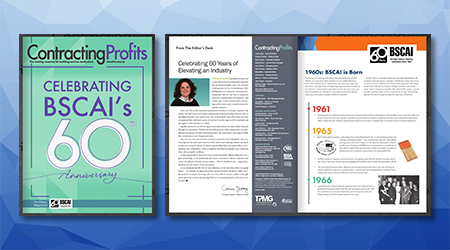
By Paige McAllister
I speak with clients every day who want to terminate an employee for poor performance, unacceptable attendance, or personality clashes. They are concerned — rightfully so — about the impacts on their business by either keeping an employee who is not meeting expectations or by letting them go in this litigious time. It can seem like a no-win situation, which can paralyze employers, leading to problems such as low productivity or sales and increased turnover of valuable employees.
I often hear, “It’s employment-at-will, right? Doesn’t that mean I can fire someone at any time for any reason?” While this is technically accurate, I remind them that it must be a non-discriminatory reason and that anyone can “sue-at-will” by claiming to have been discriminated against, despite the facts of the case. If a claim is filed, the employer must be able to prove why they took the action and that it had nothing to do with the individual having a characteristic (such as race, color, religion, sex, national origin, age, disability, genetic information, and military or veteran status) protected under federal, state, or local law.
Making these employment decisions even more challenging is the heightened political debate and disagreement around discrimination and protected status, including:
Diversity, Equity, and Inclusion (DEI)
President Trump’s executive orders rescinding DEI programs in the federal government, along with the ongoing culture clash between DEI and “anti-woke” philosophies, have created distinct “sides” to each situation. Often, complex decisions are (fairly or unfairly) reduced to one characteristic, such as race or sex. The potential heightened sensitivity on either side of an adverse employment situation increases the likelihood that a terminated employee will sue for discrimination, even with legitimate factors behind the decision.
Reverse Discrimination Claims
These claims are increasingly being filed, pursued, and won by employees who argue they were discriminated against based on a non-protected characteristic, claiming that they were adversely impacted or held to a higher standard because they do not claim a protected status. The recent unanimous United States Supreme Court decision in Ames v. Ohio Department of Youth Services clarified that Title VII does not impose a higher standard for people in majority groups and negated the additional requirement of “background circumstances” many lower courts have imposed upon reverse discrimination claims to succeed. Instead, Title VII focuses on individuals, not groups, so every case should be judged based on the individual circumstances.
At the end of the day, there is no guaranteed way to prevent an employee or applicant from filing a discrimination claim or lawsuit, regardless of the reason behind adverse employment action, nor how frivolous a claim might appear. The best thing an employer can do is build and gather evidence to support their defense throughout the process, in the hope of defending their decision if needed. This includes developing accurate and comprehensive job descriptions, customized for every position, to define what is truly required in that position. Good job descriptions should not only include required job duties, experience, and/or education but should also include the essential requirements of the job such as the physical (i.e., weight to be lifted, standing, sitting, using hands or fingers, etc.), mental (i.e., ability to read, speak, or comprehend instructions in a specific language; perform math computations; or make analytical decisions), and environmental (i.e., outside, non-climate-controlled, hot, humid, cold, etc.) factors along with the specific expectations and frequency of each. These must be critical to the job duties of each position and not just a wish list to make things easier for the company.
Occasionally, certain jobs may also require that an employee possess a particular characteristic that is usually protected by law. These bona fide occupational qualifications (BFOQ) are permitted but only when necessary. For example, the requirement for only a male to be placed to serve as an attendant in a men’s locker room could be acceptable, as would requiring only a female to be placed in a women’s lounge. These situations are extremely limited, so they should be reviewed carefully and defined accurately.
Also important is hiring well by using a practical and unbiased process and training interviewers and selectors on compliant practices. Know who you are hiring by conducting thorough background checks, including criminal history checks, credit checks, and reference checks. Follow employment law to determine what information can be used to exclude a candidate from further consideration. Expand your insight into potential employees through valid behavioral assessments to ensure they have the profile ideal for success.
Documenting every employment action, positive or negative, minor or severe, first incident or last chance, is also key. While not needed to take an employment action, this documentation may be required as part of your defense if faced with a lawsuit and cannot be created after the fact. Whether using an evaluation as part of your regular performance review process or using warnings through your progressive discipline process, each document should show the ongoing conversation to define expectations, assess an employee compared to those expectations, explain how they need to improve while offering resources to help them do so, and detail the repercussions for their failure to improve. It should be detailed in writing and signed off by both the supervisor and the employee (or by a manager serving as a witness if the employee refuses to sign). Allowing the employee to add their comments is also a strong practice to prove the conversation took place.
Being consistent is critical. You always need to adjust your expectations or actions based on each situation. That said, you should also set the same or similar expectations for each person within the same or similar position. You need to treat all employees the same whether they are your favorite person or someone who drains your enthusiasm and patience. Be as consistent as possible but do not be so rigid as to not provide employees with the variation needed for them to accomplish their jobs given their circumstance.
While my general advice — consistency, documentation, and focusing on essential job requirements — has been the same over my 25 years as an HR consultant, current factors such as recent legal decisions, executive orders, government agency guidance, and our contentious and litigious society in general have made that advice even more critical for every company to follow every day for every employee.
Paige McAllister is the Vice President of Compliance for The Workplace Advisors, a woman-owned HR consulting firm that helps businesses navigate workplace challenges.

 Celebrating BSCAI's 60th Anniversary eBook
Celebrating BSCAI's 60th Anniversary eBook The Down and Dirty on Cleaning in Virus Season
The Down and Dirty on Cleaning in Virus Season How Surfactant Use is Expanding in Commercial Cleaning
How Surfactant Use is Expanding in Commercial Cleaning